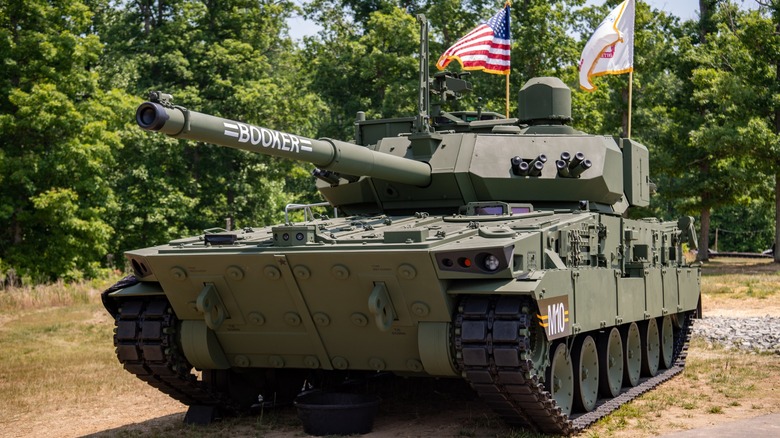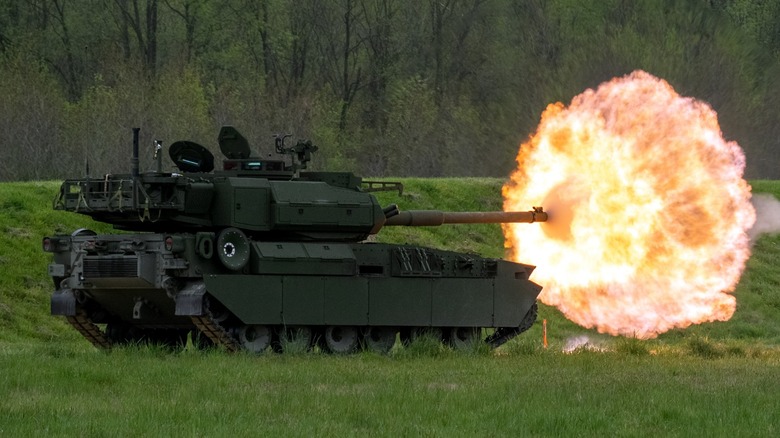Why The US Military Canceled The M10 Booker Tank
When the U.S. Army fields new equipment, it's a long process of research, development, and testing that doesn't always produce the desired results. This is true of many vehicles and weapon systems throughout the Army's history, and it's a fate now shared by the newly developed M10 Booker, which was turning heads. Development for the M10 began in 2018 with Global Dynamics Land Systems. Then it was named in honor of Private Robert D. Booker and Staff Sergeant Stevon Booker in 2023, the same year it was unveiled.
Unfortunately, the M10 Booker didn't go on to become the U.S. Army's next combat vehicle because on May 2, 2025, Army Secretary Dan Driscoll killed the project. He cited several reasons, including the overall cost of the program and the vehicles, a maintenance contract he didn't support, and the vehicle's weight and overall design. The M10 was just one of many vehicles cut from procurement on that day, though it is the most prominent given the fanfare revolving around its announcement.
The M10 wasn't mired in development hell either — around 80 had already been delivered to various units for testing. This means that there are existing vehicles in the service that are no longer covered by a maintenance contract, nor will the Army be able to utilize them as it intended. It's unknown what will become of the existing M10 units already delivered.
Why the M10 Booker Assault Gun was canceled
There are several major types of main battle tanks employed around the world, but the M10 Booker cannot be counted among them. While it looks like a tank and shares many features, the M10 was classified as an assault gun. These are smaller, more agile armored vehicles designed to support infantry units, initially during World War II. The Army planned to use the M10 with Infantry Brigade Combat Teams (IBCT), but the vehicle that came out of the design process was considerably larger than desired.
The M10 Booker weighs 38 tons, putting it close to the weight class of some main battle tanks used by other nations. It's also too heavy to be airdropped, a critical requirement in supporting an IBCT. In his announcement canceling the program, Driscoll said, "We wanted to develop a small tank that was agile and could do [airdrops] to the places our regular tanks can't," according to Task and Purpose. In terms of cost, the M10 project would have run the government more than $17 billion, though $7.2 billion had already been spent.
Driscoll's biggest concern appears to be the so-called "Right to repair," which was limited because of the maintenance plans previously contracted to General Dynamics. Driscoll believes this would impede the Army's ability to repair its own equipment, potentially endangering warfighters. The cancellation comes as a result of the Defense Department's (downloads a PDF to your device) order to "Divest outdated formations, including select armor and aviation units across the Total Army."

